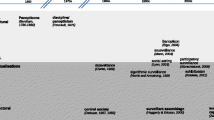Abstract
Though all video games require the player to observe the game state, the strategy genre relies on an experience of managing rule-based simulations that model real-world material systems. Designing for this experience produces a mode of interactive vision that structures gameplay as management: gamic monitoring. This article aims to develop a theory of gamic monitoring and explore its features through settler and Indigenous strategy, simulation, and resource management games. Games scholarship has yet to fully account for recent developments in Indigenous video games or how they relate to mainstream genres. Four comparative examples demonstrate how Indigenous games speak to settler-style gameplay, particularly its dynamics of monitoring and managing populations and resources. Due to their divergent frameworks for action, Indigenous strategy games intervene in mainstream genre conventions by shifting informatic play toward relational procedures of observation and decision-making. They express a paradigm of reciprocal interaction through how they mediate and critique codified game systems. Because Indigenous strategy games reconfigure resources and political engagement according to distinct models of managing the game state, they remain useful for further research in developing alternate models of strategy gameplay.








Similar content being viewed by others
References
Aarseth, E. (2007). Allegories of space: The question of spatiality in computer games. In F. von Borries, et al. (Eds.), Space time play: Computer games, architecture, and urbanism: The next level (pp. 44–55). Boston, MA: Birkhäuser Verlag AG.
Apperley, T. (2010). Gaming rhythms: Play and counterplay from the situated to the global. Amsterdam: Institute of Network Cultures.
Apperley, T. (2018). Counterfactual communities: Strategy games, paratexts and the player’s experience of history. Open Library of Humanities, 4(1), 1–22.
Bateman, C. (2009). Beyond game design: Nine steps toward creating better videogames. Boston, MA: Course Technology.
Bogost, I. (2007). Persuasion and gamespace. In F. von Borries, et al. (Eds.), Space time play: Computer games, architecture, and urbanism: The next level (pp. 304–311). Boston, MA: Birkhäuser Verlag AG.
Bouchard, P. R. (2017). I designed the Oregon Trail, you have died of dysentery. Format. Available at: https://www.format.com/magazine/features/design/you-have-died-of-dysentery-oregon-trail-design. Accessed 3 February 2020.
Byrd, J. A. (2016). ‘Do they not have rational souls?’ Consolidation and sovereignty in digital new worlds. Settler Colonial Studies, 6(4), 423–437.
Chang, A. Y. (2019). Playing nature: Ecology in video games. Minneapolis: University of Minnesota.
Crogan, P. (2011). Gameplay mode: War, simulation, and technoculture. Minneapolis: University of Minnesota Press.
Finn, E. (2017). What algorithms want: Imagination in the age of computing. Cambridge, MA: MIT Press.
Galloway, A. (2006). Gaming: Essays on algorithmic culture. Minneapolis, MN: Minnesota University Press.
Galloway, A. (2012). The interface effect. Cambridge: Polity Press.
Hayles, N. K. (2013). Traumas of code. In A. Kroker & M. Kroker (Eds.), Critical digital studies: A reader (2nd ed., pp. 39–58). Toronto: University of Toronto Press.
Jørgensen, K. (2013). Gameworld interfaces. Cambridge, MA: MIT Press.
Kitchin, R., & Dodge, M. (2011). Code/space: Software and everyday life. Cambridge, MA: The MIT Press.
LaPensée, E., & Emmons, N. (2019). Indigenizing education with the game when rivers were trails. Amerikastudien/American Studies, 64(1), 75–93.
Lewis, J. E. (2014). A better dance and better prayers: Systems, structures, and the future imaginary in aboriginal new media. In S. Loft & K. Swanson (Eds.), Coded territories: Tracing indigenous pathways in new media art (pp. 49–78). Calgary: University of Calgary Press.
Lewis, J. E., Arista, N., Pechawis, A., & Kite, S. (2018). Making kin with the machines. Journal of Design and Science. https://doi.org/10.21428/bfafd97b.
Loban, R., & Apperley, T. (2019). Eurocentric values at play: Modding the colonial from the indigenous perspective. In P. Penix-Tadsen (Ed.), Video games and the global south (pp. 87–100). Pittsburgh, PA: ETC Press.
Manovich, L. (2011). Image future. In H. Lowood & M. Nitsche (Eds.), The machinima reader (pp. 73–90). Cambridge, MA: The MIT Press.
Mukherjee, S. (2017). Videogames and postcolonialism: Empire plays back. London: Palgrave Macmillan.
Nitsche, M. (2008). Video game spaces: Image, play, and structure in 3D game worlds. Cambridge, MA: MIT Press.
Pechawis, A. (2014). Indigenism: Aboriginal world view as global protocol. In S. Loft & K. Swanson (Eds.), Coded territories: Tracing indigenous pathways in new media art (pp. 30–48). Calgary: University of Calgary Press.
Specht, D., & Feigenbaum, A. (2018). From the cartographic gaze to contestatory cartographies. In P. Bargués-Pedreny, D. Chandler, & E. Simon (Eds.), Mapping and politics in the digital age (pp. 39–55). New York: Routledge.
Taylor, T. L. (2009). The assemblage of play. Games and Culture, 4(4), 331–339.
Ludography
Firaxis Games. (2010). Civilization V.
Firaxis Games. (2016). Civilization VI.
MECC. (1985). The Oregon Trail.
MECC. (1992). The Oregon Trail.
Raindrop Games. (2012). Arrival: Village Kasike.
Elizabeth LaPensée & The Indian Land Tenure Foundation. (2019). When Rivers Were Trails.
Minority Media. (2012). Spirits of Spring.
Upper One Games. (2014). Never Alone: Kisima Inŋitchuŋa.
Lienzo. (2018). Mulaka.
Elizabeth LaPensée. (2017). Thunderbird Strike.
Miner, J. D. (2019). Biased Render: Indigenous Algorithmic Embodiment in 3D Worlds. Screen Bodies, 4(1), 48–71.
SlipCycle Productions. (2019). Terra Nova.
Author information
Authors and Affiliations
Corresponding author
Ethics declarations
Conflict of interest
On behalf of all authors, the corresponding author states that there is no conflict of interest.
About this article
Cite this article
Miner, J.D. Monitoring Simulated Worlds in Indigenous Strategy Games. Comput Game J 9, 311–329 (2020). https://doi.org/10.1007/s40869-020-00110-8
Received:
Accepted:
Published:
Issue Date:
DOI: https://doi.org/10.1007/s40869-020-00110-8




